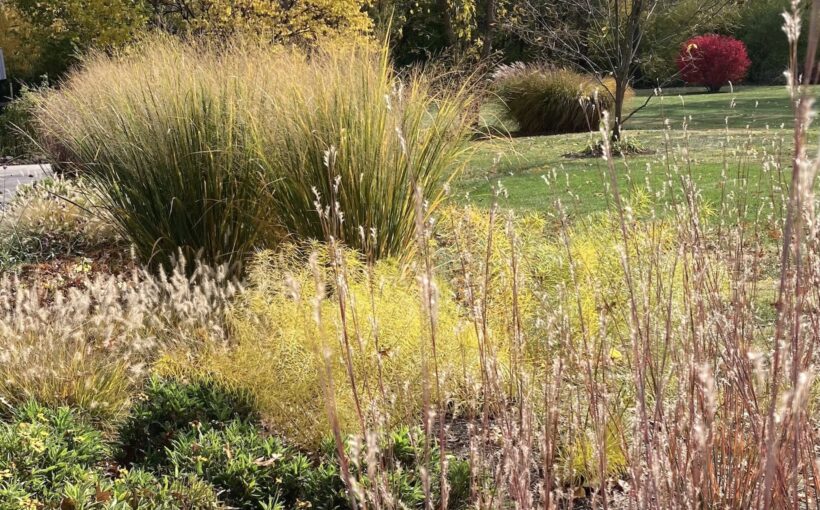We are big fans of of native grasses. They introduce movement, texture, and sound into the garden, even in winter. They supply seeds for seed-eating birds and create habitat for loads of insects and small animals. And they’re low maintenance!
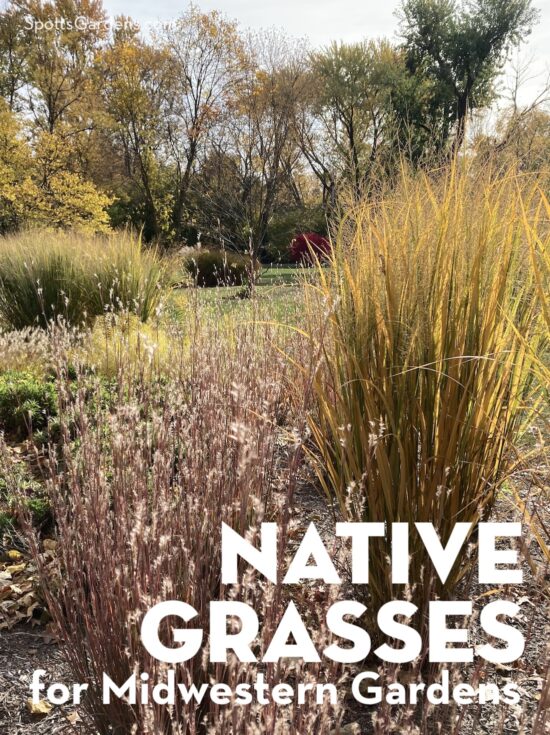
Bouteloua gracilis (Blue grama grass)
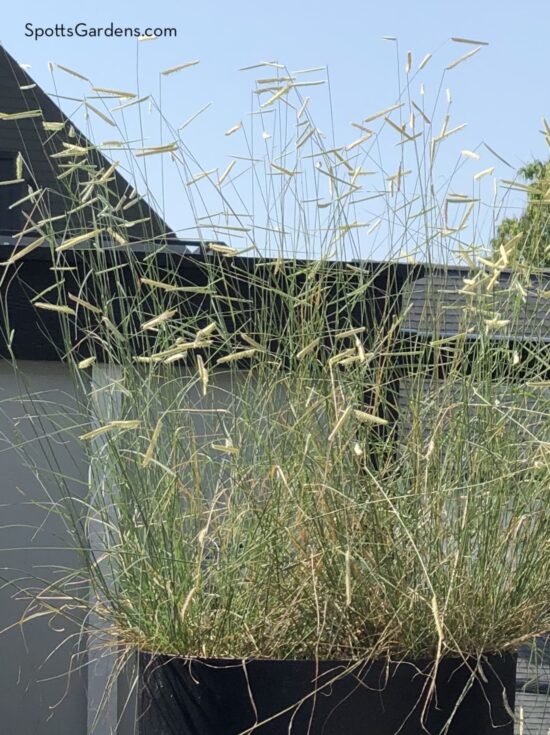
Native to dry shortgrass prairie, blue grama grass is also called mosquito grass for its seedheads, which cling to only one side of the flowering stems. The result is an unusual visual texture that recalls a cloud of insects hovering over the grass.
The narrow blades of the foliage grow only about 12″ to 15″; the purple-tinged inflorescences on the flowering stems bring the total height up to about 20″ to 24″. Blue grama grows best in full sun in dry to mesic (medium) soil. It’s can handle a range of soils and is drought tolerant.
While the straight species is excellent, we especially like the slightly taller cultivar ‘Blonde Ambition’ (shown above). It grows to about 30″ and features chartreuse flowers instead of the purple ones of the species.
Blue grama is ideal in meadows and naturalized areas, as well as in wildlife gardens. Its short stature makes it especially useful in front-garden borders and meadows. It can also be used as a turf grass and mowed to about 2″ tall.
Panicum virgatum (Switchgrass)
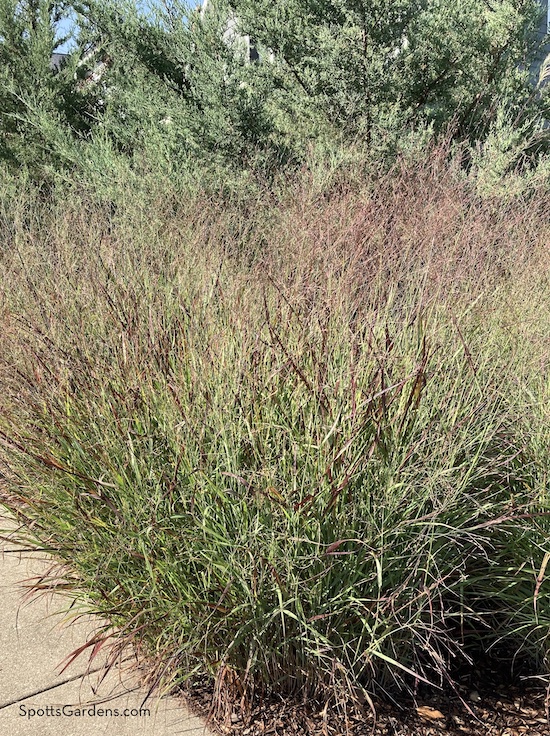
Switchgrass is a substantial plants, its upright form topped by a cloud of fine seedheads. Native to the tallgrass prairie, this large grass acts as focal point in grassland plantings. It works especially well either alone or in clumps of three to five.
We particularly love the reddish tones of 4′ tall ‘Shenandoah’ (above) and the olive green of 6′ tall ‘Northwind.’ Other popular cultivars include ‘Heavy Metal,’ ‘Prairie Sky,’ and ‘Cloud Nine.’
Switchgrass is surprisingly flexible, handling drought and periodic flooding alike. Plant in full sun, in average to moist soil. Switchgrass is a useful addition to the slopes of rain gardens, too. Most varieties will flop in too much shade, but ‘Shenandoah’ is slightly more tolerant of shade than other cultivars.
Switchgrass is versatile in the landscape, making a good partner for evergreens, roses, and perennial borders alike. Taller varieties are useful as a relatively quick-growing screen for seating areas. Thick plantings make excellent cover for insects, pollinators, and wildlife. Our small stand of ‘Shenandoah’ switchgrass in the Spotts garden is home to a large population of praying mantis, and we often see birds and rabbits there too.
Schizachyrium scoparium (Little Bluestem)
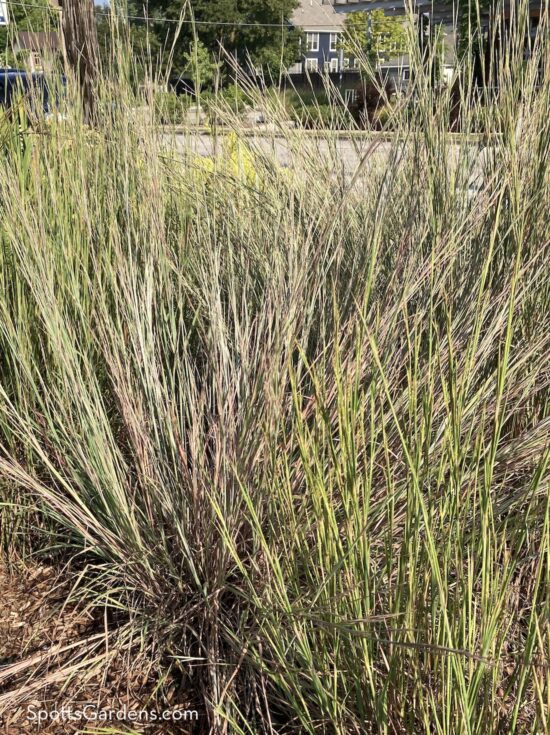
Once a component of the native tallgrass prairie, the stiff, blue-tinged blades of little bluestem are easy to identify. Their seedheads look like little tufts of cotton set along the stems that rise above the foliage. Little bluestem generally tops out in the 2′ to 3′ range. Plant in full sun and in medium to dry soil. It can easily handle heavy clay, but too-wet or too-rich soil will encourage flopping.
Little bluestem brings a kaleidoscopic palette to the garden border. While nearly all varieties posses some of the characteristic blue color in summer, they shift through tones of red, purple, and orange in fall to tan or buff in winter.
We are especially fond of ‘Carousel;’ at only 2′ to 2.5′ tall, it’s among the smaller of the cultivars and boasts a range of copper, mahogany, and pink tones in fall. ‘The Blues’ (shown above) and ‘Prairie Blues’ are tops for truly blue summer color. Other favorite cultivars include the upright ‘Standing Ovation,’ and ‘Twilight Zone.’
We particularly like little bluestem mixed into meadow plantings and planted in swathes in the mixed border. It’s also great for erosion control and wildlife gardens.
Sporobolus heterolepis (Prairie dropseed)
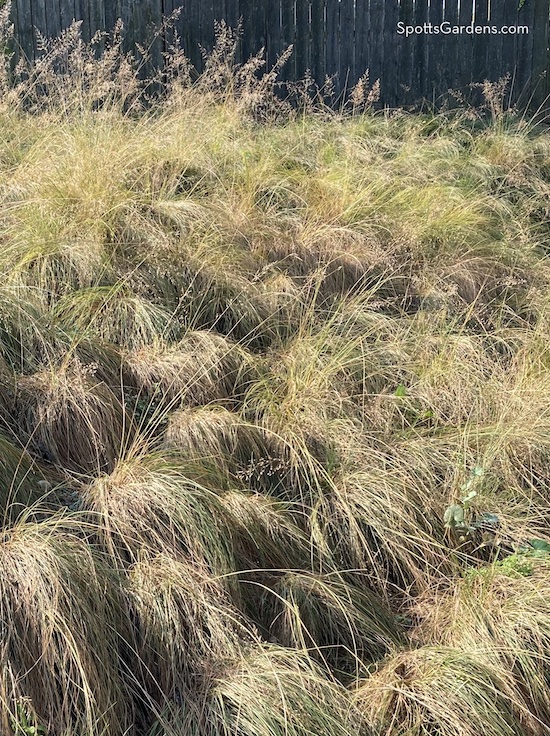
Prairie dropseed boasts airy seedheads that wave above mounds of finely textured foliage. In the fall, the green foliage turns golden orange, then fades to buff in winter. In summer and fall, prairie dropseed takes on the smell of toasted grain or popcorn. It can be a little overwhelming, so we recommend checking out the fragrance before planting.
Prairie dropseed requires full sun but isn’t fussy about soil, taking dry to medium soil with ease. As with most of our native grasses, too-rich soil can make it flop. Once established, it handles both drought and occasional flooding. The species (shown above) grows to about 3′ in flower. The new cultivar ‘Tara’ has the same graceful form in a more compact size, topping out at 2′ in flower.
Prairie dropseed is an excellent food source for seed-eating birds. And its dense cover provides great habitat for small animals. We’ve also found it to be particularly good at preventing erosion; it’s stabilizing a hillside in the Spotts garden. We like it best in mass plantings set so the sun can backlight the seedheads. Prairie dropseed makes a great addition to meadows and prairie plantings.
Making the Most of Native Grasses
We use grasses with perennials and shrubs in the mixed border, in mass plantings, in meadow and prairie gardens, and in gardens devoted to wildlife.
All four of the grasses we discussed are warm-season species. They’re late to emerge in spring and do most of their growing in the warm temperatures of late spring and summer. They usually hit their full height by midsummer.
Leave these grasses up through the winter so they can add both interest and movement to the dormant garden. Then cut them to the ground in late February. Because these grasses emerge late, we like to underplant them with daffodils and other spring bulbs for early color.
To keep weeds down, plant around warm season grasses either with early-emerging perennials or with cool-season grasses like one of our many native sedges (Carex spp.). In a grass-based planting like a meadow or prairie, at least half the plants should be grasses or sedges. Grasses prop up the flowering plants and help suppress weeds.
If you’d like help creating a grass-based planting for your garden, contact us for a free estimate today!
